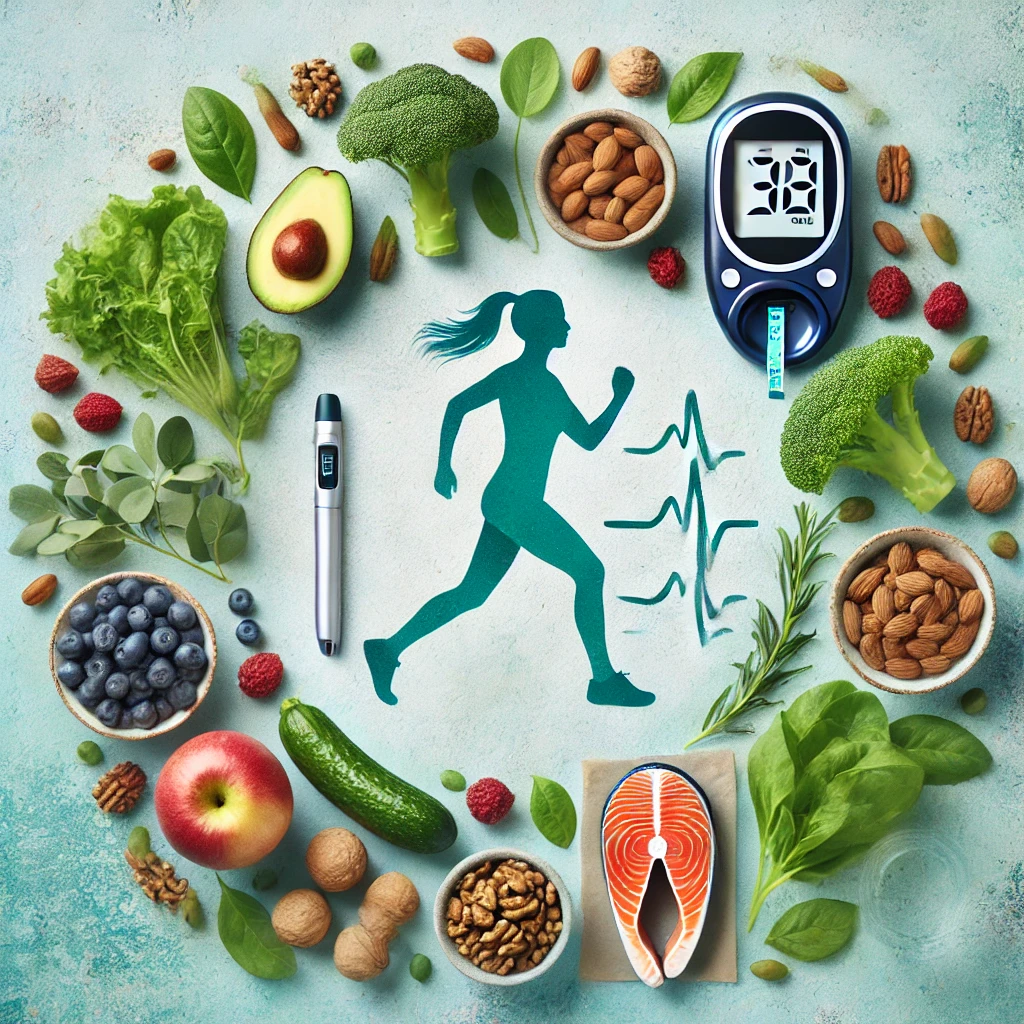
Insulin resistance is a growing health concern, affecting millions worldwide.
It can lead to weight gain, fatigue, and, if left unmanaged, serious conditions like type 2 diabetes.
But the good news is that insulin resistance can be reversed naturally with the right approach.
In this guide, we’ll explore proven strategies to help your body become more insulin-sensitive again.
Understanding Insulin Resistance
What is Insulin Resistance?
Insulin resistance is a metabolic condition in which the body’s cells become less responsive to insulin, a hormone produced by the pancreas.
Normally, insulin helps transport glucose (sugar) from the bloodstream into cells, where it is used for energy.
However, when the body becomes resistant to insulin, glucose remains in the blood, leading to elevated blood sugar levels.
To compensate, the pancreas produces more insulin in an attempt to lower blood sugar.
Over time, this excess insulin production can lead to hyperinsulinemia (high insulin levels), further worsening insulin resistance.
If left untreated, insulin resistance can progress to prediabetes and type 2 diabetes, increasing the risk of cardiovascular disease, obesity, and other metabolic disorders.
How Does Insulin Resistance Develop?
There is no single cause of insulin resistance—it is the result of multiple lifestyle and genetic factors. Some of the most common contributors include:
1. Poor Diet
A diet high in refined carbohydrates, added sugars, and unhealthy fats can contribute to insulin resistance.
Foods such as white bread, pastries, sugary beverages, and processed snacks cause blood sugar spikes, forcing the body to produce more insulin over time.
2. Lack of Physical Activity
Regular exercise helps burn glucose for energy and increases insulin sensitivity.
A sedentary lifestyle, on the other hand, reduces the body’s ability to use insulin effectively, contributing to insulin resistance.
3. Chronic Stress
Stress triggers the release of cortisol, a hormone that raises blood sugar levels. Chronic stress can lead to prolonged elevated blood sugar and insulin resistance.
4. Poor Sleep Habits
Studies show that insufficient sleep or irregular sleep patterns can negatively impact insulin sensitivity.
Poor sleep increases hunger hormones and leads to cravings for high-carb and sugary foods, worsening insulin resistance.
5. Excess Weight and Belly Fat
Carrying excess weight, especially around the abdomen, is strongly linked to insulin resistance.
Visceral fat (fat stored around organs) releases inflammatory substances that interfere with insulin signaling, making it harder for cells to absorb glucose properly.
6. Genetics and Family History
Genetics play a role in insulin resistance. If you have a family history of type 2 diabetes, you may be more predisposed to developing insulin resistance.
However, lifestyle choices still have a significant impact and can help reduce your risk.
Signs and Symptoms of Insulin Resistance
Insulin resistance often develops silently over time, meaning many people may not realize they have it until it progresses.
However, there are several common signs to watch for:
🔹 Unexplained weight gain, especially around the belly
🔹 Frequent hunger and sugar cravings
🔹 Fatigue and energy crashes after meals
🔹 Difficulty losing weight despite exercise and dieting
🔹 Brain fog or trouble concentrating
🔹 High blood sugar levels
🔹 High blood pressure or cholesterol levels
🔹 Dark patches of skin (acanthosis nigricans), typically around the neck, armpits, or groin
🔹 Polycystic Ovary Syndrome (PCOS) in women
How Is Insulin Resistance Diagnosed?
If you suspect insulin resistance, a doctor may recommend the following tests:
✔️ Fasting Blood Sugar Test – Measures blood glucose levels after fasting overnight.
✔️ Hemoglobin A1c (HbA1c) Test – Shows average blood sugar levels over the past 2-3 months.
✔️ Fasting Insulin Test – Measures fasting insulin levels; elevated levels indicate insulin resistance.
✔️ Oral Glucose Tolerance Test (OGTT) – Assesses how well your body processes glucose after consuming a sugary drink.
Why Is Insulin Resistance Dangerous?
If not addressed, insulin resistance can progress to prediabetes and type 2 diabetes, increasing the risk of:
❗ Heart disease and stroke
❗ Obesity and metabolic syndrome
❗ Fatty liver disease
❗ Hormonal imbalances (PCOS in women, low testosterone in men)
❗ Nerve damage (neuropathy) and vision problems
Can Insulin Resistance Be Reversed?
Yes! Insulin resistance can be reversed naturally through a healthy diet, regular exercise, stress management, and lifestyle changes.
The sooner you take action, the easier it is to restore insulin sensitivity and prevent complications.
The Role of Diet in Reversing Insulin Resistance
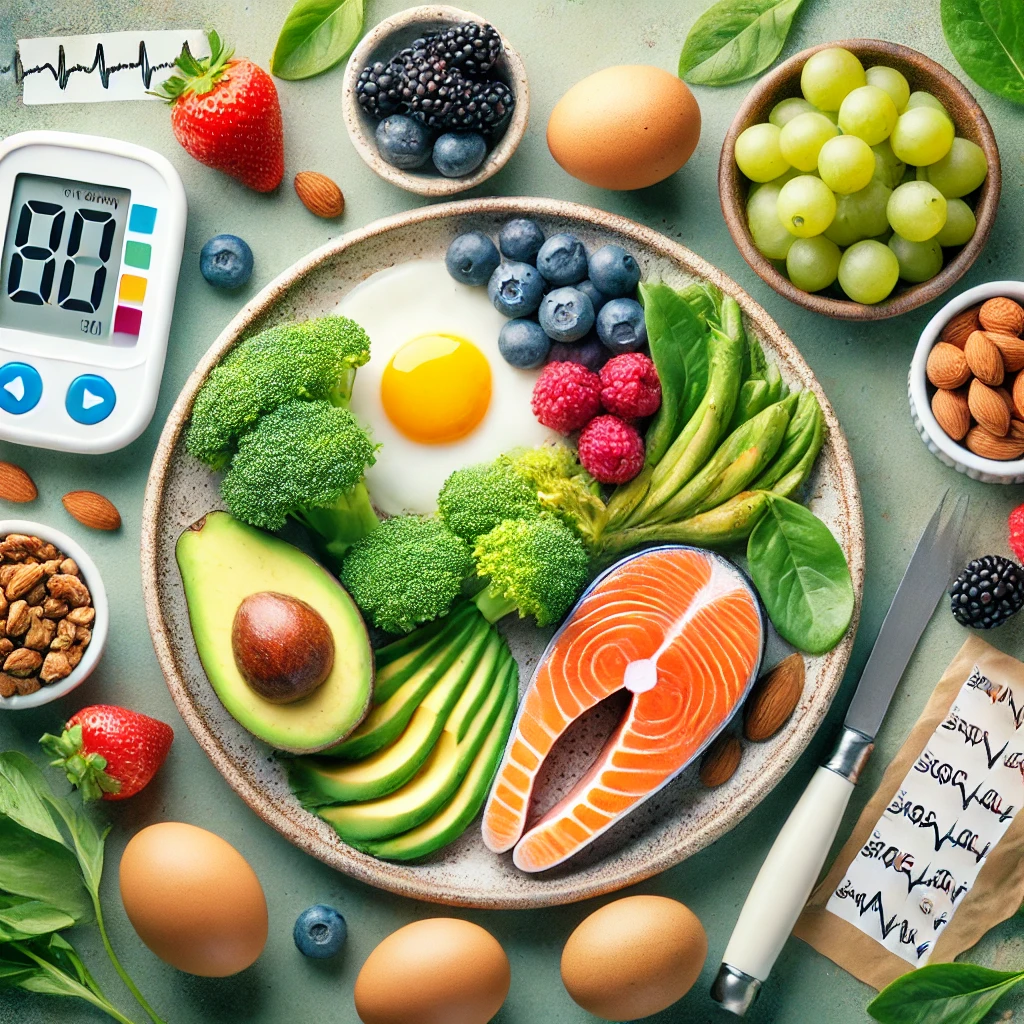
Your diet plays a crucial role in reversing insulin resistance.
The foods you consume can either improve or worsen your insulin sensitivity.
Insulin Resistance Diet Food Lists: What to Eat and What to Avoid
✅ Best Foods for Insulin Resistance:
- Non-starchy vegetables (broccoli, spinach, kale)
- Low-glycemic fruits (berries, cherries, apples)
- Lean proteins (chicken, turkey, grass-fed beef, eggs)
- Healthy fats (avocados, nuts, seeds, olive oil)
- High-fiber foods (chia seeds, flaxseeds, legumes)
🚫 Foods to Avoid:
- Refined carbohydrates (white bread, pastries, sugary cereals)
- Processed foods (fast food, frozen dinners)
- Sugary drinks (soda, fruit juices, sweetened coffee drinks)
- Trans fats and vegetable oils (margarine, fried foods)
How an Insulin Resistance Diet Plan Can Help Restore Balance
A structured meal plan helps stabilize blood sugar levels and prevents insulin spikes.
By focusing on whole, nutrient-dense foods, you can naturally lower insulin levels and improve sensitivity over time.
Best Foods for Insulin Resistance
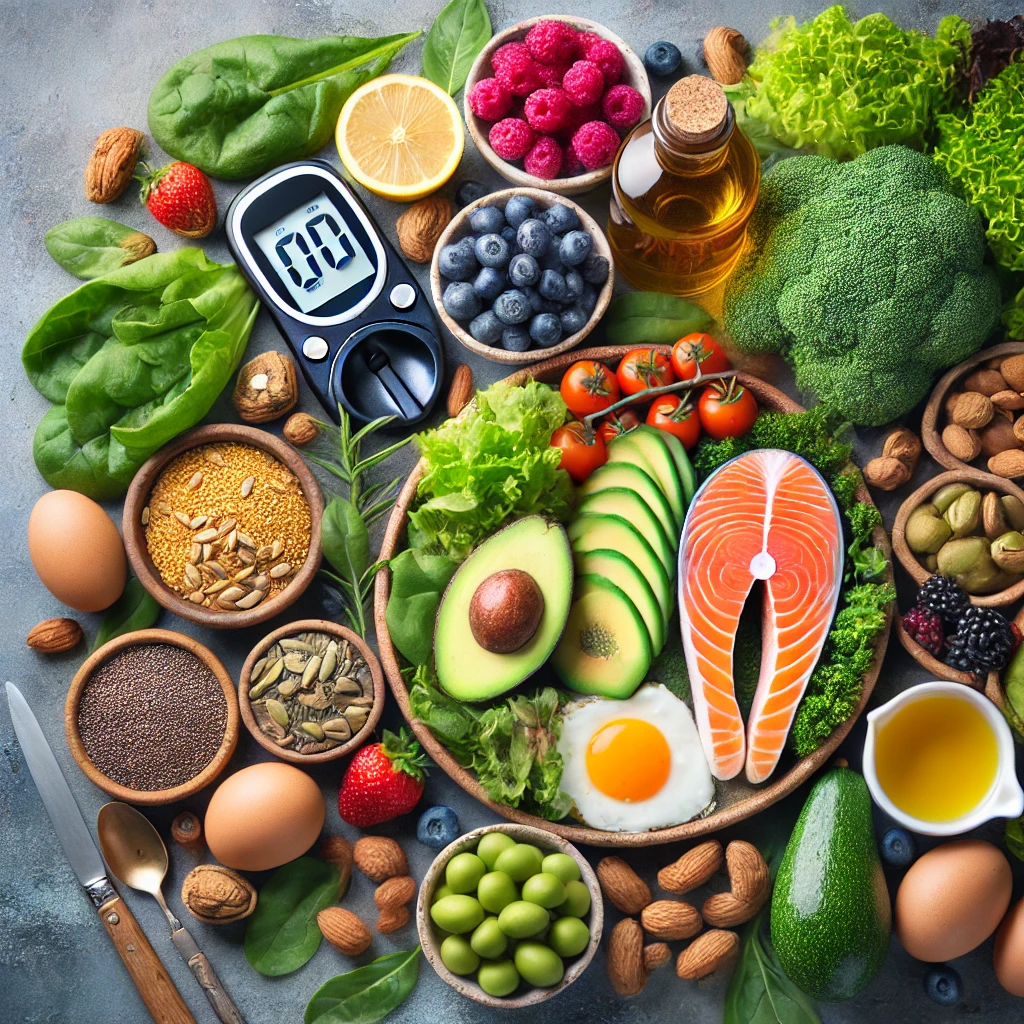
Diet plays a crucial role in reversing insulin resistance naturally.
The right foods can stabilize blood sugar levels, improve insulin sensitivity, and reduce inflammation, making it easier for your body to process glucose efficiently.
The key to an insulin resistance diet is focusing on whole, nutrient-dense foods that minimize blood sugar spikes and support metabolic health.
Below, we’ll explore the best foods to include in your diet for improving insulin resistance.
1. Low-Carb, High-Fiber Foods
Carbohydrates have the biggest impact on blood sugar levels, so choosing the right carbs is essential for managing insulin resistance.
✅ Best Choices:
- Leafy greens (spinach, kale, collard greens)
- Cruciferous vegetables (broccoli, cauliflower, Brussels sprouts)
- Zucchini and eggplant
- Bell peppers and mushrooms
- Berries (strawberries, raspberries, blueberries)
- Chia seeds and flaxseeds
🛑 Avoid:
- White bread, pasta, and pastries
- Sugary cereals and granola bars
- Fruit juices and soda
Why?
Low-carb, fiber-rich foods slow digestion, prevent rapid blood sugar spikes, and keep insulin levels stable.
2. Healthy Fats
Not all fats are bad! Healthy fats play a crucial role in improving insulin sensitivity by reducing inflammation and balancing blood sugar levels.
✅ Best Choices:
- Avocados
- Nuts and seeds (almonds, walnuts, chia seeds, flaxseeds)
- Olive oil and coconut oil
- Fatty fish (salmon, sardines, mackerel)
- Eggs
🛑 Avoid:
- Trans fats (found in margarine, fried foods, and processed snacks)
- Processed vegetable oils (soybean oil, corn oil)
Why?
Healthy fats slow down glucose absorption, reducing insulin spikes and improving overall metabolic health.
3. Lean Proteins
Protein helps stabilize blood sugar levels, promotes satiety, and supports muscle growth, which improves insulin sensitivity.
✅ Best Choices:
- Wild-caught fish (salmon, tuna, cod)
- Pasture-raised eggs
- Grass-fed beef
- Organic poultry (chicken, turkey)
- Lentils and beans (in moderation)
🛑 Avoid:
- Processed meats (hot dogs, sausages, bacon)
- Fried chicken or breaded meats
Why?
Protein helps slow the digestion of carbohydrates, preventing sharp increases in blood sugar levels.
4. Fermented Foods for Gut Health
Your gut microbiome plays a significant role in insulin sensitivity.
Healthy gut bacteria help regulate blood sugar levels and reduce inflammation.
✅ Best Choices:
- Greek yogurt (unsweetened)
- Kefir
- Kimchi
- Sauerkraut
- Miso and tempeh
🛑 Avoid:
- Flavored yogurts with added sugar
- Store-bought pickles with artificial preservatives
Why?
A healthy gut improves digestion, enhances nutrient absorption, and reduces insulin resistance.
5. Spices and Herbs That Improve Insulin Sensitivity
Certain spices and herbs have been scientifically proven to enhance insulin function and regulate blood sugar levels.
✅ Best Choices:
- Cinnamon – Helps lower blood sugar levels
- Turmeric – Reduces inflammation and improves insulin sensitivity
- Ginger – Supports digestion and metabolic health
- Garlic – Helps regulate blood sugar levels
- Apple cider vinegar – Lowers post-meal blood sugar spikes
Why?
These natural ingredients boost metabolism, reduce inflammation, and support insulin function.
6. Nuts and Seeds for Insulin Resistance
Nuts and seeds provide a powerful combination of healthy fats, protein, and fiber, making them excellent for blood sugar control.
✅ Best Choices:
- Almonds
- Walnuts
- Chia seeds
- Flaxseeds
- Sunflower seeds
🛑 Avoid:
- Flavored or roasted nuts with added sugar and salt
Why?
Nuts and seeds improve insulin sensitivity, reduce hunger cravings, and support heart health.
7. Hydrating Foods and Beverages
Proper hydration is essential for maintaining stable blood sugar levels.
✅ Best Choices:
- Water – Keeps blood sugar levels balanced
- Herbal teas (green tea, ginger tea) – Help regulate glucose levels
- Bone broth – Supports gut health and digestion
🛑 Avoid:
- Sugary drinks (soda, sweetened coffee drinks)
- Alcohol (in excess)
Why?
Staying hydrated flushes out toxins, supports metabolism, and prevents insulin spikes.
Sample Meal Plan for Insulin Resistance
To give you an idea of how to incorporate these insulin-friendly foods into your daily routine, here’s a simple meal plan:
🥑 Breakfast: Scrambled eggs with spinach, avocado, and flaxseeds + green tea
🥗 Lunch: Grilled chicken with quinoa and roasted vegetables
🍣 Snack: Greek yogurt with walnuts and berries
🍲 Dinner: Baked salmon with sautéed Brussels sprouts and olive oil
🍵 Beverage: Herbal tea or apple cider vinegar drink
By focusing on whole, unprocessed foods, you can stabilize blood sugar levels, enhance insulin sensitivity, and reduce inflammation.
A balanced diet rich in fiber, protein, and healthy fats is key to reversing insulin resistance naturally.
Lifestyle Changes to Reverse Insulin Resistance
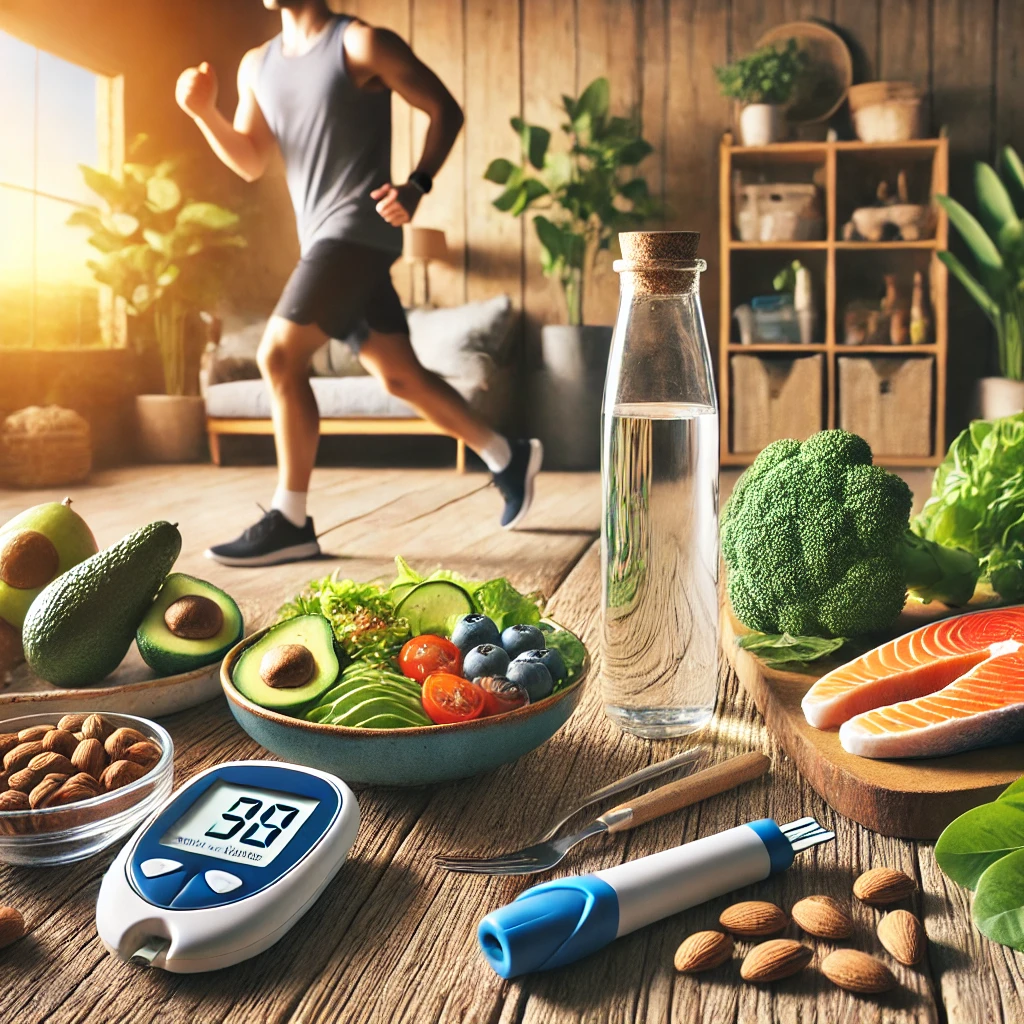
While diet plays a crucial role in reversing insulin resistance, lifestyle choices such as exercise, sleep, and stress management are equally important.
Making strategic changes in your daily habits can significantly improve insulin sensitivity, reduce blood sugar spikes, and prevent the progression to type 2 diabetes.
Let’s explore the most effective lifestyle changes to naturally reverse insulin resistance.
1. Exercise Regularly to Improve Insulin Sensitivity
Exercise is one of the most powerful ways to enhance insulin sensitivity.
Physical activity helps muscles absorb glucose for energy, reducing blood sugar levels and improving the body’s response to insulin.
🏋️ Best Exercises for Insulin Resistance:
✅ Strength Training (Weight Lifting, Bodyweight Exercises)
- Increases muscle mass, which helps the body use glucose more efficiently
- Reduces fat accumulation that contributes to insulin resistance
✅ High-Intensity Interval Training (HIIT)
- Short bursts of intense activity followed by rest periods
- Proven to improve insulin sensitivity even more than steady-state cardio
✅ Aerobic Exercise (Cardio)
- Walking, jogging, swimming, cycling
- Burns excess glucose and improves cardiovascular health
✅ Daily Movement
- Simple activities like taking the stairs, stretching, and walking after meals help regulate blood sugar
How Much Exercise Do You Need?
🏃♂️ Aim for at least 150 minutes of moderate-intensity exercise per week or 30 minutes per day, plus 2-3 days of strength training for optimal results.
2. Prioritize Sleep to Balance Blood Sugar
Lack of sleep disrupts hormonal balance, increasing cortisol levels and causing insulin resistance.
Poor sleep also increases cravings for sugar and processed foods, worsening the problem.
😴 Tips for Better Sleep:
✅ Aim for 7-9 hours of sleep per night
- Go to bed and wake up at the same time daily
✅ Reduce screen time before bed
- The blue light from screens suppresses melatonin, a hormone that promotes sleep
✅ Avoid heavy meals and caffeine before bedtime
- Late-night eating can spike insulin levels
✅ Create a relaxing bedtime routine
- Try reading, meditation, or herbal tea to promote relaxation
3. Manage Stress to Lower Cortisol Levels
Chronic stress triggers cortisol production, which increases blood sugar levels and worsens insulin resistance.
Managing stress is essential for hormonal balance and metabolic health.
🧘 Best Stress Management Techniques:
✅ Mindfulness Meditation
- Helps reduce cortisol levels and improve insulin sensitivity
✅ Deep Breathing Exercises
- Activates the parasympathetic nervous system, reducing stress-induced blood sugar spikes
✅ Yoga and Tai Chi
- Improve flexibility, reduce stress, and lower blood sugar levels
✅ Spending Time in Nature
- Outdoor activities reduce stress hormones and promote relaxation
✅ Engage in Hobbies
- Painting, music, gardening, or any enjoyable activity can lower stress naturally
4. Try Intermittent Fasting for Insulin Sensitivity
Intermittent fasting (IF) is a powerful tool for reversing insulin resistance.
Fasting gives your body a break from constant insulin production, allowing it to reset and become more insulin-sensitive.
⏳ Popular Intermittent Fasting Methods:
✅ 16:8 Method – Fast for 16 hours, eat within an 8-hour window (e.g., eating from 12 PM – 8 PM)
✅ 5:2 Method – Eat normally for 5 days, then limit calories to 500-600 on 2 days
✅ 24-Hour Fasting – Occasionally fasting for a full day can dramatically improve insulin sensitivity
🚨 Who Should Avoid Fasting?
- Pregnant or breastfeeding women
- People with eating disorders
- Those with adrenal fatigue or chronic stress
5. Reduce Sugar and Processed Foods
Even if you’re eating healthy meals, hidden sugars and processed foods can still contribute to insulin resistance.
🛑 Avoid These Common Culprits:
- White bread, pasta, and processed grains
- Flavored yogurts, sweetened coffee drinks
- Packaged snacks with hidden sugars and refined oils
- Processed meats and fast food
✅ Instead, Focus on Whole Foods:
- Fresh vegetables, high-quality proteins, and healthy fats
- Fiber-rich foods like chia seeds, lentils, and nuts
- Low-glycemic fruits such as berries and apples
6. Stay Hydrated to Improve Metabolism
Dehydration can elevate blood sugar levels, making insulin resistance worse.
Drinking enough water helps the kidneys flush out excess glucose, improving insulin function.
💧 How Much Water Should You Drink?
✅ Aim for at least 8-10 glasses per day
✅ Drink a glass of water before meals to reduce hunger and prevent overeating
✅ Add lemon or apple cider vinegar for extra metabolic benefits
7. Maintain a Healthy Weight
Excess belly fat is strongly linked to insulin resistance.
Losing even 5-10% of body weight can significantly improve insulin sensitivity and reduce the risk of type 2 diabetes.
⚡ Best Strategies for Sustainable Weight Loss:
✅ Focus on whole, unprocessed foods
✅ Strength train to build muscle and burn fat
✅ Avoid crash diets – slow, steady weight loss is more effective
8. Consider Supplements for Insulin Sensitivity
Certain vitamins and minerals can enhance insulin function and support blood sugar balance.
💊 Best Supplements for Insulin Resistance:
✅ Magnesium – Supports glucose metabolism (found in spinach, almonds, and dark chocolate)
✅ Chromium – Helps regulate blood sugar levels (found in broccoli, eggs, and lean meats)
✅ Omega-3 Fatty Acids – Reduce inflammation and improve insulin sensitivity (found in salmon, flaxseeds, and walnuts)
✅ Cinnamon – Proven to lower blood sugar and improve insulin sensitivity
✅ Berberine – A natural supplement with effects similar to metformin
⚠️ Always consult a healthcare provider before adding new supplements to your routine.
Take Control of Your Health Today
By making these lifestyle changes, you can naturally reverse insulin resistance and regain control of your blood sugar levels.
The key is consistency—small, sustainable habits lead to big results over time.
✅ Start today by:
✔️ Exercising regularly (strength training + cardio)
✔️ Prioritizing sleep and stress management
✔️ Eating whole, nutrient-dense foods
✔️ Staying hydrated and maintaining a healthy weight
✔️ Considering intermittent fasting if it fits your lifestyle
Your health is in your hands! Take small steps every day, and over time, you’ll see major improvements in insulin sensitivity and overall well-being.
Delicious Insulin Resistance Recipes 🍽️
Reversing insulin resistance starts with nutrient-dense, whole foods that support stable blood sugar levels.
The right recipes should be low in refined carbs, high in fiber, and packed with healthy fats and lean proteins to keep you feeling full while improving insulin sensitivity.
Below are some delicious, easy-to-make recipes that fit perfectly into an insulin resistance diet plan.
1. Blood Sugar-Balancing Breakfast: Avocado & Egg Breakfast Bowl 🥑🍳
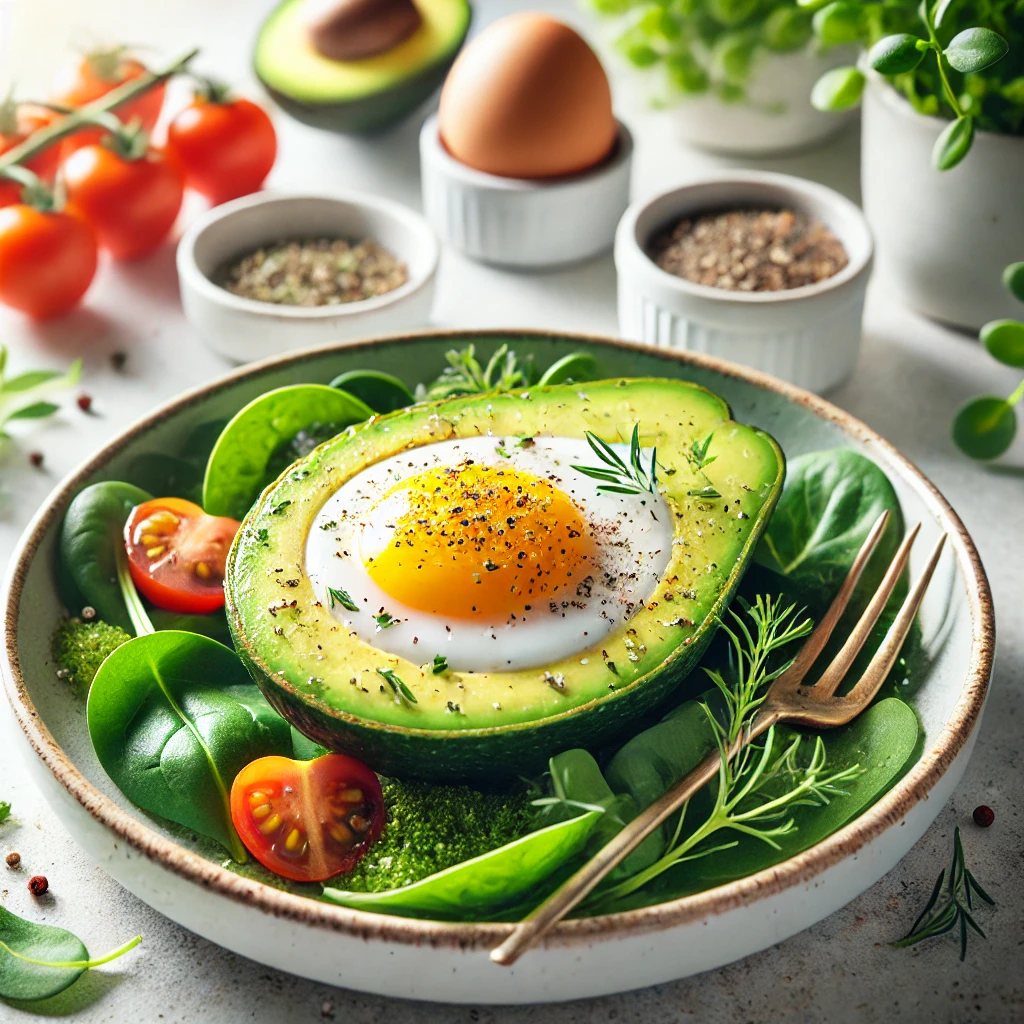
Why This Works:
- High in healthy fats and protein to stabilize blood sugar
- Low in carbs to prevent insulin spikes
- Packed with fiber to improve gut health and digestion
🔹 Ingredients:
- 1 ripe avocado
- 2 pasture-raised eggs
- 1 tbsp olive oil
- ¼ tsp sea salt
- ½ tsp black pepper
- 1 tsp flaxseeds (optional)
- Handful of arugula or spinach
🔹 Instructions:
- Cut the avocado in half and remove the pit. Scoop out some flesh to create a bigger space for the eggs.
- Crack an egg into each avocado half.
- Place in a baking dish and bake at 375°F (190°C) for 12-15 minutes, or until the egg is set.
- Drizzle with olive oil, season with salt and pepper, and sprinkle flaxseeds for extra fiber.
- Serve over a bed of arugula or spinach for added nutrients.
🛑 Skip the toast! This meal is naturally low-carb and keeps insulin levels stable.
2. Insulin-Friendly Lunch: Grilled Chicken & Avocado Salad 🥗
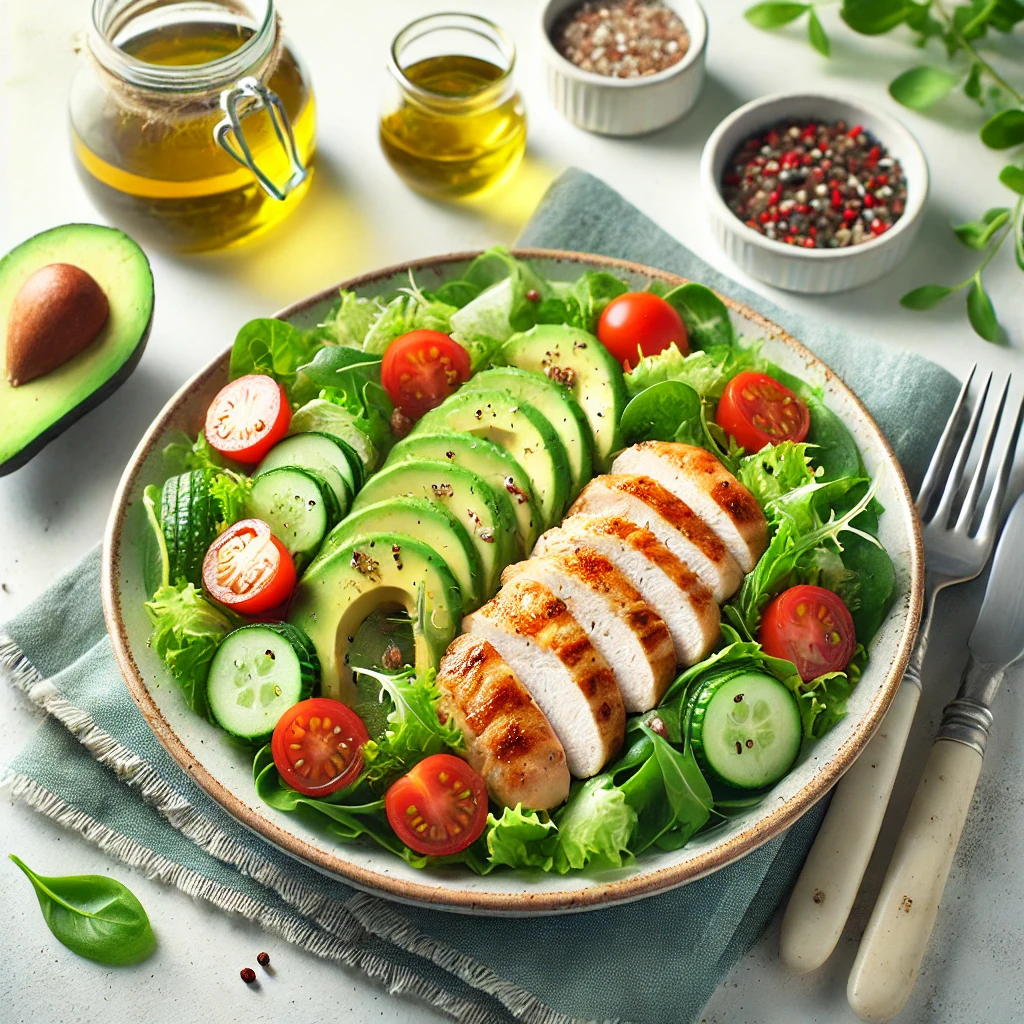
Why This Works:
- High in lean protein to promote satiety
- Loaded with fiber and healthy fats for insulin sensitivity
- Packed with antioxidants to reduce inflammation
🔹 Ingredients:
- 1 grilled chicken breast, sliced
- 2 cups mixed greens (spinach, kale, arugula)
- 1 small avocado, sliced
- ½ cup cherry tomatoes, halved
- ¼ cup cucumbers, sliced
- ¼ cup feta cheese (optional)
- 2 tbsp olive oil
- 1 tbsp apple cider vinegar
- ½ tsp Dijon mustard
- Salt & pepper to taste
🔹 Instructions:
- In a large bowl, combine mixed greens, grilled chicken, avocado, cherry tomatoes, and cucumbers.
- In a small bowl, whisk together olive oil, apple cider vinegar, Dijon mustard, salt, and pepper.
- Drizzle the dressing over the salad and toss to combine.
- Serve immediately and enjoy!
✅ Pro Tip: Apple cider vinegar reduces blood sugar spikes when consumed before meals!
3. Blood Sugar-Stabilizing Dinner: Lemon Garlic Salmon with Roasted Vegetables 🐟
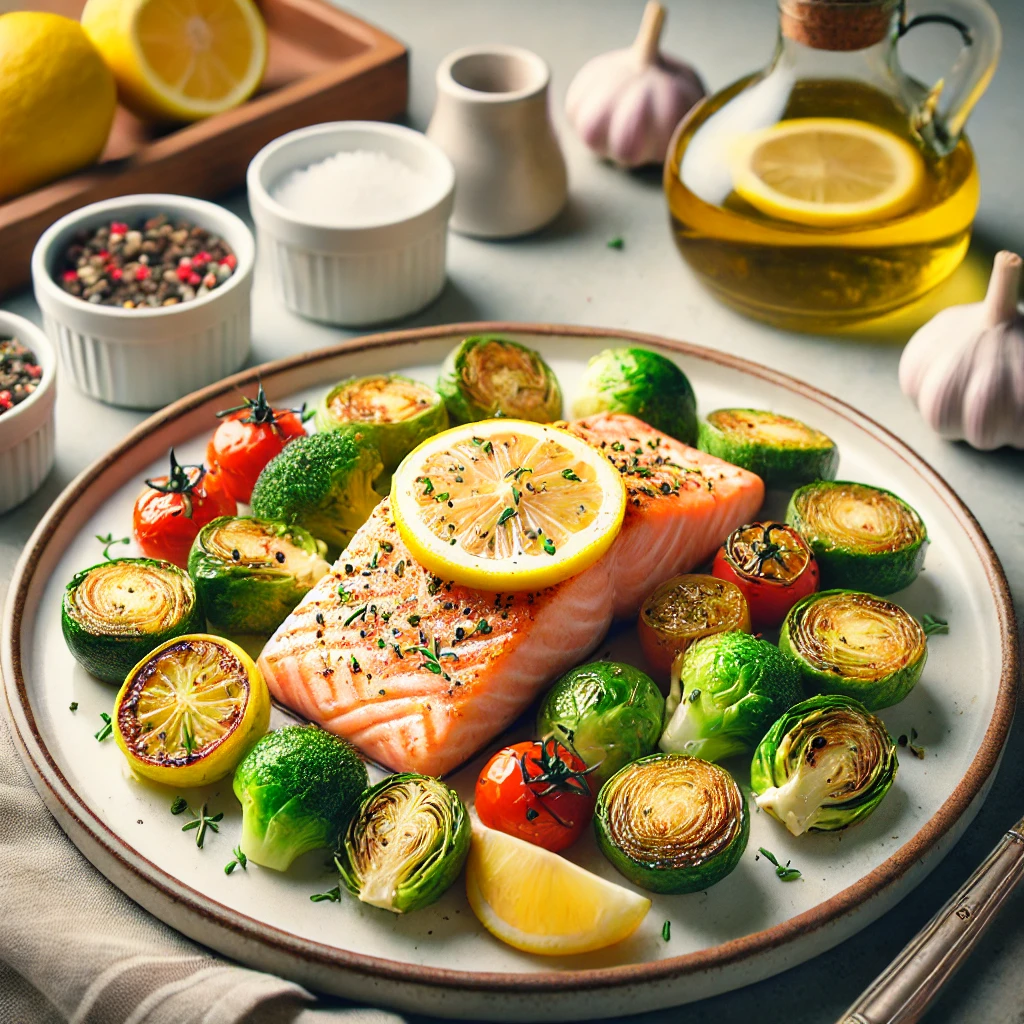
Why This Works:
- Omega-3 fatty acids in salmon improve insulin sensitivity
- Non-starchy veggies help maintain stable blood sugar levels
- Anti-inflammatory ingredients reduce metabolic stress
🔹 Ingredients:
- 2 salmon fillets
- 2 tbsp olive oil
- 1 tbsp fresh lemon juice
- 2 garlic cloves, minced
- 1 tsp paprika
- 1 tsp turmeric (optional, for anti-inflammatory benefits)
- ½ tsp sea salt
- ½ tsp black pepper
- 1 zucchini, sliced
- 1 cup broccoli florets
- ½ cup cherry tomatoes
🔹 Instructions:
- Preheat oven to 400°F (200°C).
- In a bowl, mix olive oil, lemon juice, garlic, paprika, turmeric, salt, and pepper.
- Place salmon fillets on a baking sheet lined with parchment paper. Rub the seasoning mixture onto the salmon.
- Arrange zucchini, broccoli, and cherry tomatoes around the salmon, drizzling them with olive oil.
- Bake for 15-18 minutes, or until the salmon flakes easily with a fork.
- Serve immediately with a squeeze of fresh lemon juice.
✅ Pro Tip: Pair with cauliflower rice instead of regular rice for a low-carb alternative!
4. Insulin-Resistant Snack: Chia Seed Pudding 🥄
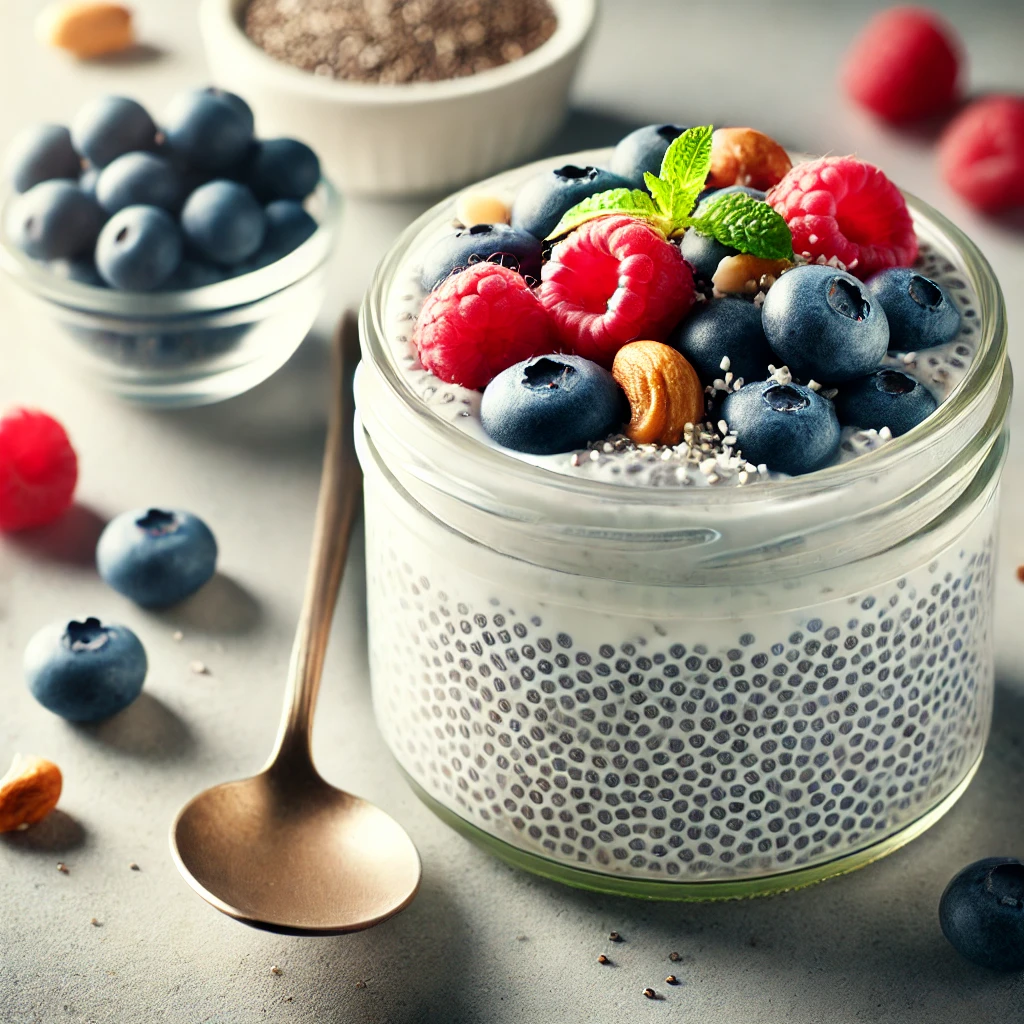
Why This Works:
- Rich in fiber to slow glucose absorption
- Contains healthy omega-3 fats to improve insulin sensitivity
- Low in sugar and naturally sweetened
🔹 Ingredients:
- 2 tbsp chia seeds
- ½ cup unsweetened almond milk
- ½ tsp vanilla extract
- ½ tsp cinnamon (helps regulate blood sugar)
- ½ tsp monk fruit sweetener or stevia (optional)
- ¼ cup berries (blueberries, raspberries, or strawberries)
🔹 Instructions:
- In a small jar, combine chia seeds, almond milk, vanilla extract, cinnamon, and sweetener.
- Stir well, cover, and refrigerate for at least 2 hours (or overnight).
- Before serving, stir again and top with fresh berries.
✅ Pro Tip: Make a batch for the week for an easy grab-and-go snack!
5. Low-Carb Insulin Resistance Dessert: Dark Chocolate Avocado Mousse 🍫
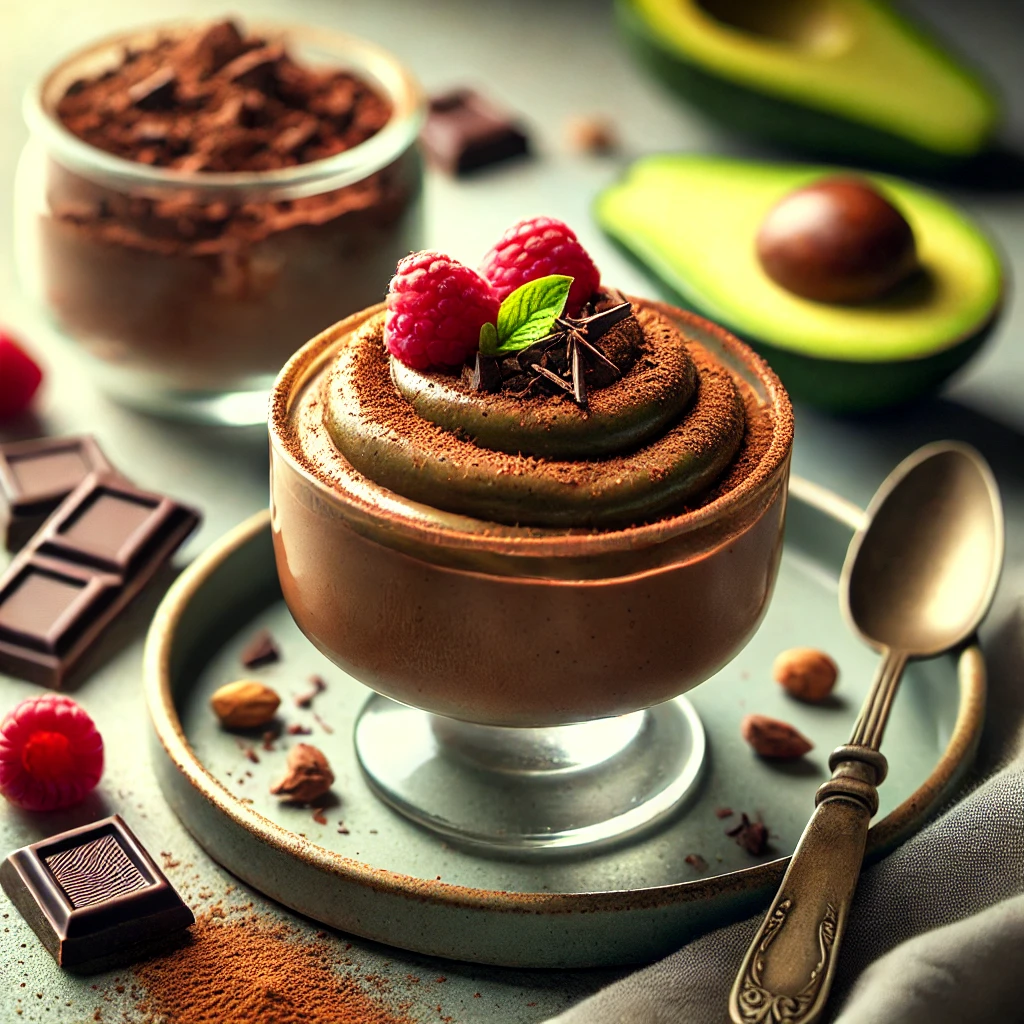
Why This Works:
- Uses healthy fats from avocado to balance blood sugar
- Dark chocolate contains flavonoids that improve insulin sensitivity
- Low in sugar but still satisfies cravings
🔹 Ingredients:
- 1 ripe avocado
- 2 tbsp unsweetened cocoa powder
- 2 tbsp unsweetened almond milk
- 1 tbsp monk fruit sweetener (or stevia)
- ½ tsp vanilla extract
- ¼ tsp cinnamon
🔹 Instructions:
- Blend all ingredients in a food processor until smooth and creamy.
- Refrigerate for 30 minutes before serving.
- Garnish with a sprinkle of cinnamon or a few crushed nuts.
✅ Pro Tip: Use 85% or higher dark chocolate to maximize the insulin-friendly benefits!
Bonus: A Sample Full-Day Meal Plan for Insulin Resistance
Here’s how you can structure a full day of eating to improve insulin sensitivity:
🍳 Breakfast: Avocado & Egg Bowl + Green Tea
🥗 Lunch: Grilled Chicken & Avocado Salad
🥑 Snack: Chia Seed Pudding + Handful of Almonds
🍣 Dinner: Lemon Garlic Salmon with Roasted Vegetables
🍫 Dessert: Dark Chocolate Avocado Mousse
✅ Hydration Tip: Drink plenty of water and incorporate herbal teas like cinnamon tea or green tea to further improve blood sugar control!
Enjoy Delicious, Blood Sugar-Friendly Meals
Eating for insulin resistance doesn’t have to be boring or restrictive.
By incorporating fiber-rich vegetables, healthy fats, lean proteins, and anti-inflammatory spices, you can naturally improve insulin sensitivity while enjoying flavorful meals.
💡 Key Takeaways:
✔️ Focus on whole, unprocessed foods
✔️ Prioritize healthy fats, lean proteins, and fiber
✔️ Avoid refined carbs, added sugars, and processed foods
✔️ Hydrate with water, herbal teas, and apple cider vinegar drinks
By making small, sustainable changes in your diet, you can reverse insulin resistance naturally and enjoy long-term health benefits! 🎉
Supplements and Natural Remedies for Insulin Resistance
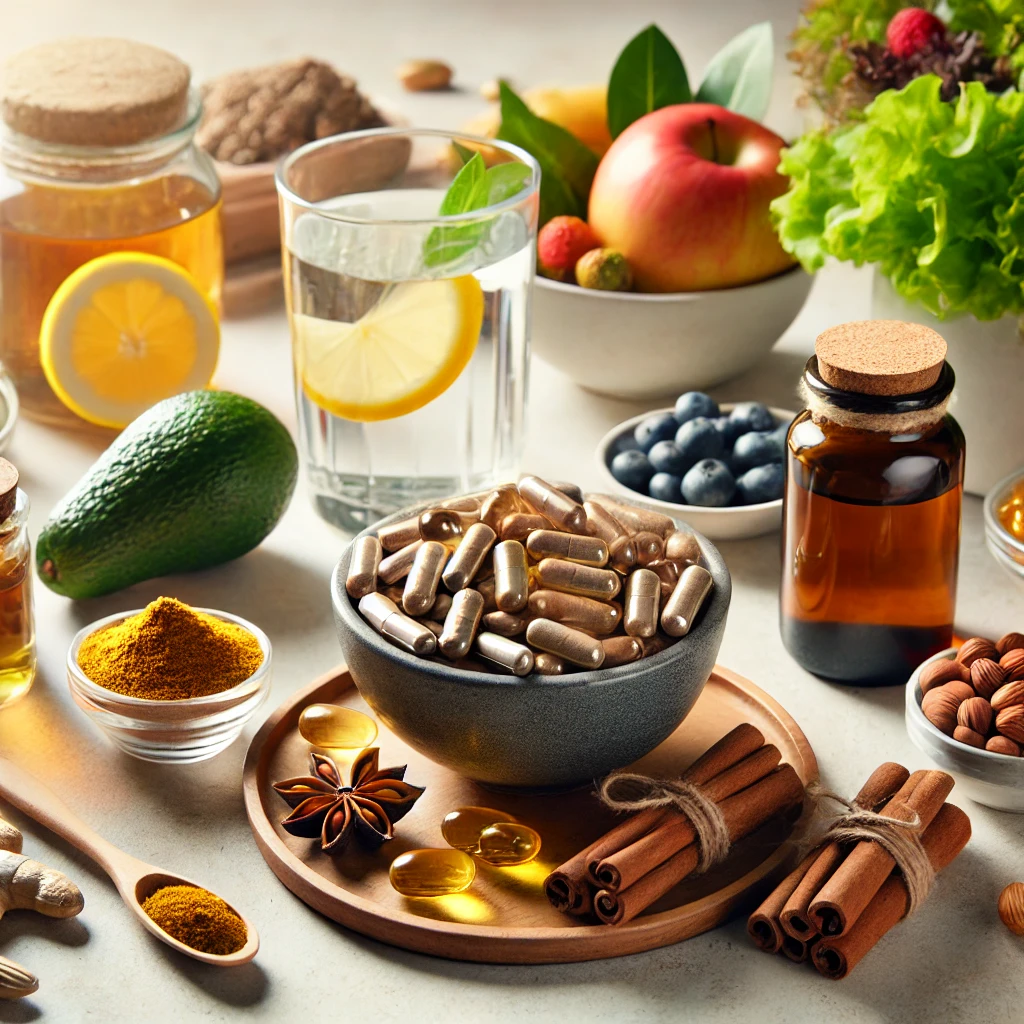
While diet and lifestyle changes are the most effective ways to reverse insulin resistance naturally, certain supplements and natural remedies can provide additional support by enhancing insulin sensitivity, reducing inflammation, and balancing blood sugar levels.
Here’s a detailed look at science-backed supplements and natural remedies that can help manage insulin resistance effectively.
1. Key Vitamins & Minerals for Insulin Sensitivity
Certain nutrients play a crucial role in glucose metabolism and insulin function.
Deficiencies in these vitamins and minerals can contribute to insulin resistance and poor blood sugar control.
✅ Magnesium 🥬
Magnesium is essential for glucose regulation and is involved in over 300 metabolic processes. Studies show that magnesium deficiency is linked to higher insulin resistance.
🔹 Best Food Sources:
- Spinach, Swiss chard, kale
- Almonds, cashews, walnuts
- Avocados
- Pumpkin seeds
- Dark chocolate (85% or higher)
🔹 Supplement Dosage:
- 200-400 mg per day of magnesium glycinate or citrate (most absorbable forms)
✅ Chromium 🥚
Chromium is a trace mineral that enhances insulin’s effectiveness by improving glucose uptake into cells.
🔹 Best Food Sources:
- Broccoli
- Eggs
- Whole grains
- Lean meats
🔹 Supplement Dosage:
- 200-1,000 mcg per day (Chromium Picolinate is the most bioavailable form)
✅ Omega-3 Fatty Acids 🐟
Omega-3s reduce inflammation and help regulate insulin function, making them beneficial for insulin resistance and metabolic health.
🔹 Best Food Sources:
- Wild-caught salmon, sardines, mackerel
- Chia seeds, flaxseeds, walnuts
- Avocado
🔹 Supplement Dosage:
- 1,000-2,000 mg per day of EPA/DHA (high-quality fish oil)
✅ Vitamin D ☀️
Vitamin D deficiency is linked to insulin resistance and metabolic disorders. Ensuring optimal levels can improve blood sugar control.
🔹 Best Food Sources:
- Salmon, sardines
- Egg yolks
- Fortified dairy and almond milk
🔹 Supplement Dosage:
- 2,000-5,000 IU per day (Vitamin D3 with K2 for better absorption)
- Get 15-30 minutes of sun exposure daily
✅ Zinc 🥜
Zinc plays a role in insulin production and glucose metabolism. Studies suggest that zinc supplementation can improve insulin sensitivity.
🔹 Best Food Sources:
- Pumpkin seeds, sunflower seeds
- Grass-fed beef, chicken
- Lentils, chickpeas
🔹 Supplement Dosage:
- 10-50 mg per day (Opt for zinc picolinate or zinc citrate)
2. Herbal Supplements for Insulin Resistance 🌿
Several herbs and natural compounds have been scientifically proven to enhance insulin sensitivity and lower blood sugar levels.
✅ Berberine 🌱
Berberine is a powerful plant compound that has been compared to metformin, a common diabetes medication, in its ability to lower blood sugar levels and improve insulin sensitivity.
🔹 How It Works:
- Activates AMPK, a key enzyme in metabolism
- Lowers blood sugar by reducing glucose production in the liver
- Improves gut microbiome, supporting overall health
🔹 Dosage:
- 500 mg, 2-3 times per day (Before meals)
🚨 Caution: Berberine may interact with certain medications. Always consult a doctor before use.
✅ Cinnamon 🥄
Cinnamon mimics insulin’s action, helping move glucose into cells and reducing blood sugar levels.
🔹 Best Type:
- Ceylon cinnamon (true cinnamon) is more effective and safer than cassia cinnamon.
🔹 How to Use:
- Sprinkle ½-1 tsp per day on food, in coffee, or in smoothies.
- Take 1,000-2,000 mg per day as a supplement.
✅ Turmeric & Curcumin 🍛
Curcumin, the active compound in turmeric, has strong anti-inflammatory and blood sugar-lowering properties.
🔹 How It Works:
- Reduces chronic inflammation, a major cause of insulin resistance.
- Improves pancreatic function for better insulin regulation.
🔹 How to Use:
- Add ½ tsp turmeric + black pepper to meals.
- Take 500-1,000 mg of curcumin extract daily.
✅ Apple Cider Vinegar (ACV) 🍏
Apple cider vinegar reduces post-meal blood sugar spikes and improves insulin function.
🔹 How to Use:
- Mix 1 tbsp ACV in 8 oz water and drink before meals.
- Use in salad dressings for a blood sugar-friendly option.
3. Probiotics & Gut Health for Insulin Sensitivity
The gut microbiome plays a major role in metabolism and insulin function.
A healthy gut improves insulin sensitivity and reduces inflammation.
✅ Best Probiotic Foods:
- Greek yogurt (unsweetened)
- Kefir
- Kimchi
- Sauerkraut
- Miso & Tempeh
✅ Probiotic Supplements:
- Look for Lactobacillus and Bifidobacterium strains for best results.
- Take 10-50 billion CFUs per day.
4. Lifestyle Practices That Enhance Natural Remedies
🌿 Natural remedies work best when combined with healthy lifestyle habits:
✔️ Follow a low-carb, high-fiber diet
✔️ Exercise regularly (strength training + cardio)
✔️ Get enough sleep (7-9 hours per night)
✔️ Stay hydrated
✔️ Practice intermittent fasting (if suitable for you)
A Holistic Approach to Insulin Resistance
By combining diet, lifestyle changes, and targeted supplements, you can naturally improve insulin sensitivity and lower blood sugar levels.
💡 Key Takeaways:
✔️ Magnesium, chromium, omega-3s, and vitamin D are essential for blood sugar control.
✔️ Berberine, cinnamon, turmeric, and apple cider vinegar help enhance insulin function.
✔️ Probiotics and gut health play a major role in reversing insulin resistance.
✔️ Supplements work best alongside proper diet, exercise, and stress management.
By making these changes today, you can take control of your health and prevent long-term complications!
Taking Control of Your Health
Reversing insulin resistance naturally is possible with diet, exercise, stress management, and proper nutrition.
The key is consistency—small changes every day lead to big results over time.
Start today by:
✅ Eating whole, unprocessed foods
✅ Moving your body daily
✅ Reducing sugar intake
✅ Prioritizing sleep and stress management
By implementing these strategies, you can take control of your health and reverse insulin resistance naturally! 🚀
Related Articles:
Boost Your Omega-3s with These 4 Healthy Fish Recipes
References:
DeFronzo, R. A. (2009). “From the Triumvirate to the Ominous Octet: A New Paradigm for the Treatment of Type 2 Diabetes Mellitus.” Diabetes, 58(4), 773-795.
🔗 https://doi.org/10.2337/db09-9028
Magnesium and Insulin Sensitivity:
Barbagallo, M., & Dominguez, L. J. (2015). “Magnesium and Type 2 Diabetes.” World Journal of Diabetes, 6(10), 1152-1157.
🔗 https://doi.org/10.4239/wjd.v6.i10.1152
Berberine as a Natural Alternative to Metformin:
Turner, N., Li, J. Y., Gosby, A. K., et al. (2008). “Berberine Improves Glucose Metabolism through a Mechanism Distinct from Metformin.” Cell Metabolism, 8(5), 434-446.
🔗 https://doi.org/10.1016/j.cmet.2008.09.002
Cinnamon for Blood Sugar Control:
Anderson, R. A., Broadhurst, C. L., Polansky, M. M., et al. (2004). “Cinnamon Improves Glucose and Lipids of People with Type 2 Diabetes.” Diabetes Care, 26(12), 3215-3218.
🔗 https://doi.org/10.2337/diacare.26.12.3215
The Role of Omega-3 in Insulin Sensitivity:
Kalupahana, N. S., Claycombe, K. J., & Moustaid-Moussa, N. (2011). “Omega-3 Fatty Acids Alleviate Insulin Resistance and Adipose Tissue Inflammation.” The Journal of Nutrition, 141(3), 371-376.
🔗 https://doi.org/10.3945/jn.110.128439
The Importance of Exercise in Reversing Insulin Resistance:
Hawley, J. A., & Lessard, S. J. (2008). “Exercise Training-Induced Improvements in Insulin Action.” Acta Physiologica (Oxford, England), 192(1), 127-135.
🔗 https://doi.org/10.1111/j.1748-1716.2007.01783.x
Apple Cider Vinegar for Blood Sugar Control:
Johnston, C. S., Kim, C. M., & Buller, A. J. (2004). “Vinegar Improves Insulin Sensitivity to a High-Carbohydrate Meal in Subjects With Insulin Resistance.” Diabetes Care, 27(1), 281-282.
🔗 https://doi.org/10.2337/diacare.27.1.281
